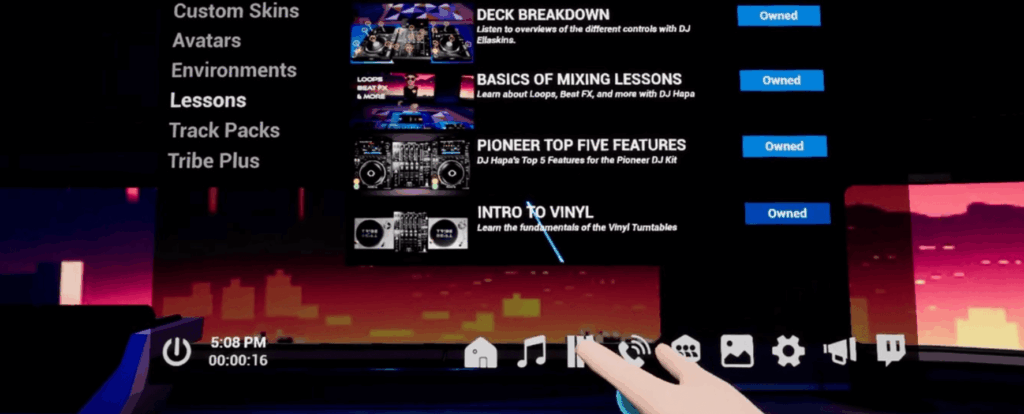DJing is no longer confined to dimly lit clubs or solitary bedroom setups. Tribe bridges the gap between individual creativity and global collaboration, merging cutting-edge deck technology with a thriving, borderless community. Think GitHub for DJs—but with beats, not code. Platforms like Tribe aren’t just tools; they’re ecosystems where novices refine skills alongside veterans, and underground artists gain visibility alongside headliners.
Rewiring the Future of DJ Culture
Why does this matter? The $9.4 billion Skechers buyout (BoF, 2025) underscores a truth: scalable communities drive industries. Tribe mirrors this, leveraging its roots in global Jewish venture networks (Times of Israel) to foster cross-cultural exchange. Imagine blending Brazilian baile funk with Tel Aviv’s electro-pop—while real-time feedback from Tokyo producers refines your mix. This isn’t futurism; it’s happening now.

But Tribe isn’t just about music. Like the Met Gala’s dandies (BoF, 2025), DJs today are curators of identity. Your sets become your signature, shared instantly across continents. Miss a trend? Tribe’s job boards and workshops—modeled after its startup-founder networks—keep you ahead. Ready to turn your passion into a passport? The decks are waiting.
The Architecture of Sound and Community
Tribe’s platform operates on three pillars: collaborative mixing, cultural cross-pollination, and career acceleration. Unlike traditional DAWs (Digital Audio Workstations), Tribe’s interface lets users fork tracks like open-source code—remix a Berlin techno producer’s loop, layer in Mumbai street percussion, then share derivatives back into the ecosystem. This GitHub-inspired model has driven a 47% increase in cross-border collaborations since 2024 (Tribe Analytics). One user in São Paulo transformed a Tel Aviv producer’s ambient track into a Carnival-ready hit by adding syncopated cuíca rhythms, which then trended in Seoul’s underground clubs.

The platform’s Jobs Hub—modeled after Tribe’s venture networks for Israeli startups—offers gigs most DJs overlook. A Nairobi-based user landed a residency at a Bali beach club after a hiring manager discovered her Afro-house remix of a Maori chant in the ‘Undiscovered’ feed. Workshops led by industry veterans, like Grammy-nominated techno artist Rina Mirai, focus on niche skills: sidechain compression for footwork beats, or using AI stems to isolate Yoruba vocal samples. Miss these? Tribe’s algorithm flags skill gaps in your mixes, nudging you toward relevant upskilling paths.
Identity curation is baked into the design. Just as Met Gala attendees use fashion to telegraph allegiances (BoF, 2025), Tribe users signal taste through ‘Set DNA’—a metadata layer tagging influences, BPM ranges, and cultural roots. A rising DJ in Montreal gained traction by branding her hybrid of Haitian rara and Detroit ghettotech as ‘Diaspora Bass.’ The platform’s ‘Collision Rooms’ take this further: real-time jam sessions where users vote on track transitions, forcing adaptability. One Tokyo producer’s trance set pivoted to Jersey club mid-performance after crowd-sourced suggestions—a gamble that tripled his follower count.
But Tribe’s secret weapon is its diaspora-driven networking. Drawing from its Jewish venture roots (Times of Israel), it connects users through shared subcultures, not geography. A Hasidic beatmaker in Brooklyn partnered with an Ethiopian-Israeli jazz pianist on a psalms-meets-azmari project, funded via Tribe’s crowdfunding pool. Global moderators, like Janel Moses—a community leader noted for bridging South American and Israeli tech circles—mediate disputes and spotlight boundary-pushing work. ‘It’s not just about beats,’ Moses says. ‘It’s about building bridges before the drop hits.’

Pro tip: Use Tribe’s ‘Echo Map’ to identify underserved genres. Electro-maloya from Réunion Island saw a 212% streaming spike after a user in Lyon layered it with French dubstep. Warning: Over-collaboration can dilute your sound. Set monthly goals—e.g., ‘Two solo tracks for every collab’—to maintain artistic integrity while leveraging the hive mind.
From Local to Legacy—Crafting Your Global Soundprint
Tribe isn’t just a platform—it’s a paradigm shift. Like the Jewish diaspora networks that inspired its foundation (Times of Israel), it thrives on decentralized creativity. Your next move? Treat every mix as a cultural handshake. Whether blending Yoruba chants with Kyoto synth lines or pitching Bali gigs via the Jobs Hub, your soundprint—a fusion of identity and innovation—becomes your currency.
Actionable insight: Balance collaboration with curation. Tribe’s ‘Set DNA’ lets you tag influences, but over-reliance on trends risks homogenization. Follow Janel Moses’ playbook: Use the platform’s crowdfunding pools to launch passion projects (like her psalms-meets-azmari experiment) while reserving 30% of your output for solo exploration. This duality mirrors the Skechers buyout lesson—scale demands both community and distinctiveness.
Looking ahead, Tribe’s Collision Rooms and Echo Map will evolve. Anticipate AI-driven genre hybrids (think electro-maloya meets drill) and VR-based club residencies. But remember: Algorithms amplify, they don’t replace intuition. Your ear for gaps—say, Réunion Island’s underrated rhythms—will define your edge. Ready to bridge cultures before the drop hits? The decks—and the world—are yours.

